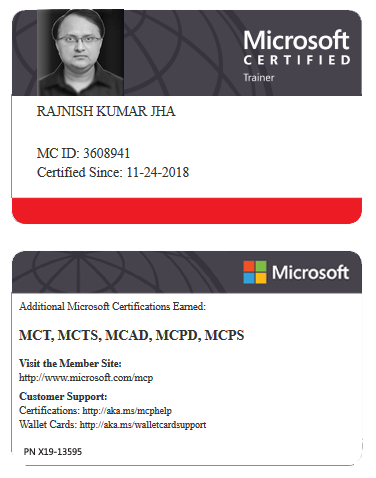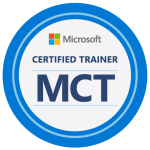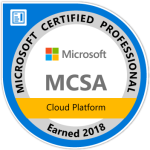Azure Cloud, DevOps resources and blog
-

How Microsoft Entra ID is used as a directory for cloud apps
Microsoft Entra ID (formerly Azure Active Directory, or Azure AD) is used as a cloud-based directory service that manages and secures user identities, access, and permissions for cloud applications. It serves as a central identity provider for applications, services, and resources both within Microsoft’s ecosystem… [ Read more ]
-

Azure Virtual Network explained in detail
Azure Virtual Network (VNet) is one of the fundamental building blocks in Azure that allows you to securely connect Azure resources to each other, the internet, and on-premises environments. It provides a private network where you can define and control the IP addressing, DNS settings,… [ Read more ]
-

Compare Microsoft Entra ID to Active Directory Domain Services (AD DS)
Microsoft Entra ID (formerly Azure Active Directory, or Azure AD) and Active Directory Domain Services (AD DS) are both identity and access management solutions provided by Microsoft, but they serve different purposes and are designed for different environments. Below is a comparison of the two:… [ Read more ]
-

Subnets and Subnetting in Azure – Features and Use-cases
In Azure, subnets are an integral part of your Virtual Network (VNet) architecture. Subnets allow you to partition a VNet's IP address space into smaller, more manageable segments. Subnetting helps you organize and control the flow of network traffic, segment security policies, and ensure efficient… [ Read more ]
-

Know everything about Azure Virtual Network – Features and Components
An Azure Virtual Network (VNet) is one of the foundational building blocks for your private network in Azure. It allows Azure resources to securely communicate with each other, the internet, and on-premises networks. Azure VNets provide isolation, segmentation, and secure communication between virtual machines (VMs),… [ Read more ]
-
How to add Blob Lifecycle Management rules in Azure
Azure Blob Storage offers Lifecycle Management to automate the movement of data between different access tiers (Hot, Cool, Archive) based on specified conditions, such as blob age or last access time. This helps optimize storage costs by automatically transitioning blobs to more cost-effective storage tiers… [ Read more ]
-
How to configure a Custom Route in Azure
Configuring a custom route in Azure involves creating a User-Defined Route (UDR) in a route table and associating it with a subnet. Follow these steps to implement a custom route in Azure: Step 1: Create a Route Table Navigate to the Azure Portal: Search for… [ Read more ]
-
How to configure Azure DNS to host your domain
Configuring Azure DNS to Host Your Domain Hosting your domain in Azure DNS involves several steps, from creating a DNS zone in Azure to updating your domain registrar's name servers. Here's a detailed guide to help you through the process. Prerequisites Domain Name: Ensure you… [ Read more ]
-
How to configure Azure Files and Azure File Sync
Configuring Azure Files and Azure File Sync allows you to centralize and manage your file shares in the cloud while enabling synchronization across on-premises environments. Below is a step-by-step guide. Part 1: Configure Azure Files Create a Storage Account Go to the Azure Portal. Click… [ Read more ]
-
How to configure Azure Storage Security in Azure
Configuring Azure Storage security is crucial to ensure that your data is protected from unauthorized access. Azure provides multiple features and mechanisms to enhance storage security. Here's a step-by-step guide to configuring Azure Storage security. Secure Access to Azure Storage Accounts Enable Azure Active Directory… [ Read more ]
-
How to configure diagnostic capabilities like IP flow verify, next hop, and network topology in Azure Network Watcher
To configure diagnostic capabilities such as IP Flow Verify, Next Hop, and Network Topology in Azure Network Watcher, you need to enable Network Watcher in the appropriate Azure region and ensure the necessary permissions are granted to run diagnostics on your network resources. Here's a… [ Read more ]
-
How to configure Storage Accounts in Azure
Configuring storage accounts in Azure involves several steps to create, customize, and manage them for your specific requirements. Here's a step-by-step guide: Prerequisites Azure Subscription Ensure you have an active Azure subscription. Azure Portal Access Access the Azure Portal at . Create a Storage Account… [ Read more ]
-
How to connect Azure Storage Explorer to a Storage Account
To connect Azure Storage Explorer to your Azure Storage account, you need to follow a few simple steps to authenticate and link your account. Azure Storage Explorer supports multiple connection methods, including using Azure Active Directory (AAD), connection strings, storage account keys, or Shared Access… [ Read more ]
-
How to connect Azure Storage Explorer to Azure Data Lake Storage
To connect Azure Storage Explorer to Azure Data Lake Storage (ADLS), you need to follow similar steps to connect to other Azure Storage resources. Azure Data Lake Storage is built on top of Azure Blob Storage, but it offers additional capabilities for big data analytics,… [ Read more ]



















